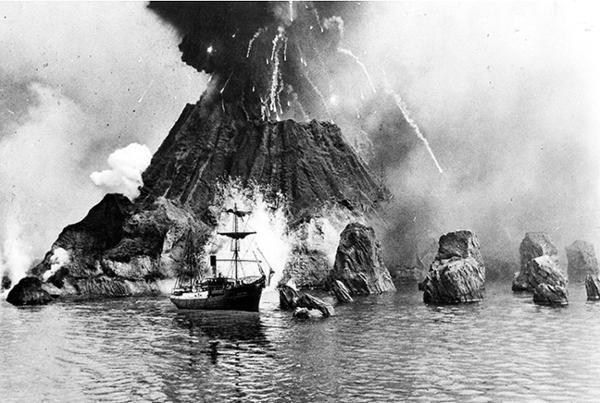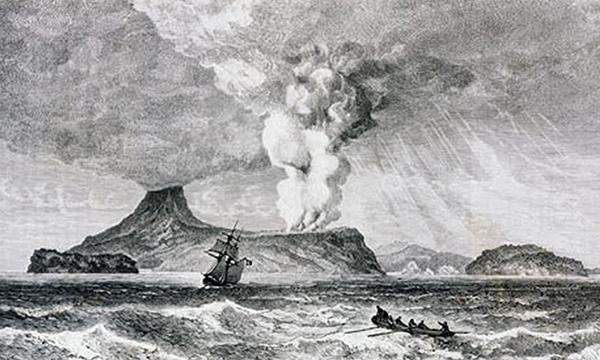
History of Krakatoa: August 27, 1883, the day the Earth exploded!
In early May 1883, at dawn, the captain of a German warship spotted a cloud of ash rising above the uninhabited island of Krakatoa. At this time, he was probably unaware that he was witnessing one of the very first scientifically documented eruptions for at least two centuries.
Over the next two months, many commercial and cruise ships will witness the same spectacle: explosions, swirling clouds of ash and eruptions of incandescent volcanic bombs. A few scientific expeditions, led by Dutch settlers, were then carried out, and the population living on the coasts of the Sunda Strait was so impressed by what was said that they organized regular festivities. Unfortunately, it was only much later that people understood that these eruptions were only the prelude to one of the greatest catastrophes in the history of humanity.
Following a series of explosions, a colossal eruption took place on August 26, 1883, which caused the subsidence of two thirds of the north of the island, a series of lava flows, as well as immense tsunamis which carried their macabre waves towards the nearby coasts. By the evening of the two days that followed, there were more than 35,000 victims and the destruction of around 200 coastal towns and villages.
Dark days
During the peak of the cataclysm, the fiery clouds reached 80 km in height and covered an area of more than 800,000 km2. The region was also plunged into darkness for two and a half days. Ash drifts through the ether and causes halo effects around the Moon and Sun. One of the other consequences is the drop in temperatures in the months that follow (they will not return to normal until 5 years later). The final explosion also produced the most powerful sound ever recorded: it was heard over more than 10% of the Earth's surface! This is how reports of “distant shots” emitted in Australia and on Mauritius, located more than 4,500 km from Krakatoa, were made. In a few hours, these are actually pressure waves which circle the world several times and sensitize the measuring instruments in the United States and Great Britain. And, when Krakatoa collapses in its magma chamber, the last explosions propel the fragments of volcanic rocks more than 20 km away. The collapse of a large part of the remaining island then causes an underwater caldera approximately 6 km in diameter. Scientists later estimated that Krakatoa's phenomenal eruption generated a pyroclastic flow, which destroyed almost everything in its path. These fiery clouds – as they are more commonly called – contain a very dense mixture of blocks of lava, pumice stones and volcanic ash, and their speeds, which can reach up to 80 km/h, as well as their temperatures (between 200 and 700o Celsius) therefore cause the destruction of everything they invade.
Even more devastating were the tsunamis that hit the coasts of Sumatra and Java. The highest wave was estimated at 41 m and the series that followed destroyed more than 200 coastal towns and villages. The local fauna and flora were devastated, many infrastructures were swept away by the floods and more than 35,000 people lost their lives in the disaster, including 34,000 who died in the tsunamis! After the cataclysm of 1883, volcanic activity remained calm until the mid-1920s, when new eruptions gave birth to the son of Krakatoa, "Anak Krakatau" in Indonesian, in the middle of the subterranean caldera. navy which was created at the time. The Krakatoa's offspring then grew rapidly and showed continued activity ever since. It grows by nearly 5 meters per year and each eruption regularly raises fears of a catastrophe identical to that of 1883. The latest, on December 22, 2018, caused a tsunami which swept away more than 400 people in its path. , this despite Anak Krakatau being considered a scientifically well-observed and studied volcano.


